FUTURES, Melbourne.
Lara Chamas, Matilda Davis, Christopher Duncan, Evangeline Riddiford-Graham, Fiona Williams. Curated by Victoria Wynne-Jones.
Looking at the appeal or influence of magic and mysticism in aesthetics today, one wonders why? Especially given that — as Mitch Therieau writes in Vibe, Mood, Energy — the language of mysticism emerged in reaction to a boom-time (mid-century America), which is at odds with our state today. Therieau argues that today’s is ‘a different mysticism […] projecting visions of cosmic sympathies onto the black boxes that organize and administer so much of contemporary life’, infiltrating our intimacies. It’s a big, magical mood at the so-called end of the world, but we’re still making art, still going to little galleries in Naarm/Melbourne. FUTURES’ exhibition, never together, dips into the language of magic, and the magic of language, producing a soft-talking magic of its own, a thoughtful shelter from the storm.
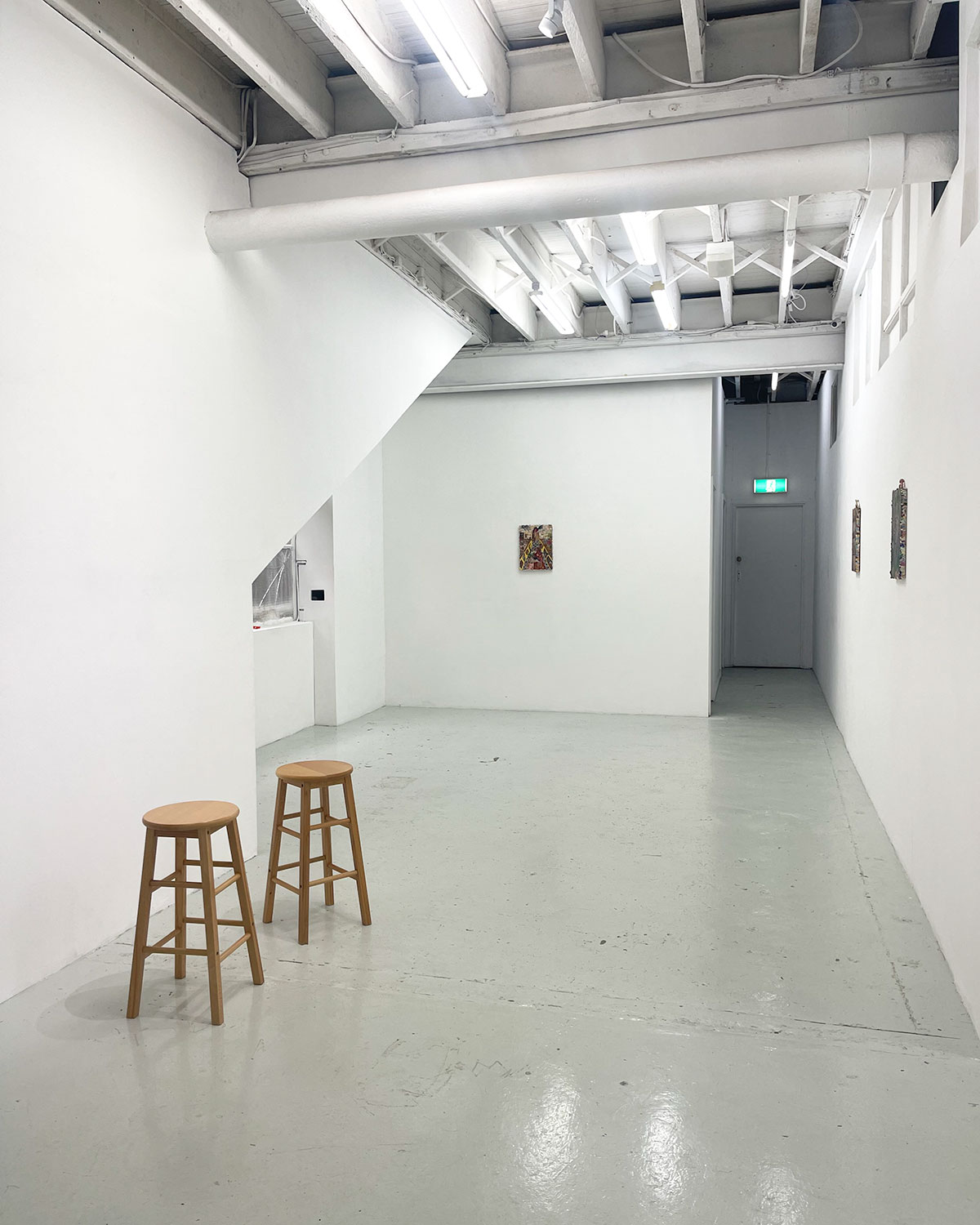
My grocery delivery app says, Thanks! We look forward to delivering some more magic on your next order! The way we eat today can be totally sci-fi. Masterchef Australia thinks somewhat magically, too, but constantly returning to the nostalgic in food, a dish’s ability to transport us back to early food memories — the good stuff, maybe the hard times, but love of family and heritage. Lara Chamas’ work in never together is Masterchef-y, as her works are inspired by memories of eating an apricot fruit leather, Qamar al-Din. The Lebanese-Australian artist evokes this recollection by glazing orange resin over a photograph of herself making the treat. The apricot is an important food to Lebanon, and links to France, whose use of fruits and nuts in desserts reflects Middle Eastern culinary influence. Chamas’ glowing monster clay apricots, in her sculptural work Mishmish, have a vitality that is otherworldly, different and complementary to Matilda Davis’ paintings on the wall opposite.
But more so than food and magic, never together is interested in “narrative”. This is the second in a series of exhibitions curated by Victoria Wynne-Jones, after stories that she found stuck in her head. What's narrative to magic? Wynne-Jones writes of never together’s design: to evoke ‘the feeling one has when one has spent the whole day reading a novel and then goes out in the evening to an exhibition opening, still buzzing with its words’. In other words, the presumably quite rare achievement of pursuing the enchantment of art (the magic of narrative, or perhaps more specifically “words”) in a disenchanted world. The deeply sincere lifestyle Wynne-Jones proposes is not so much about art’s glamour or even critique, but a sort of precious delight —persistent, dogged, seeking faith in art in, yeah, a capitalist world that’s not very nice. So we shut it out with thoughtfulness and beauty, the buzz, words. This endless simmering content makes a buffer against the world, and spurs the inoculated subject (at least in theory) to be something more, to think more deeply about the world they are fighting to avoid.
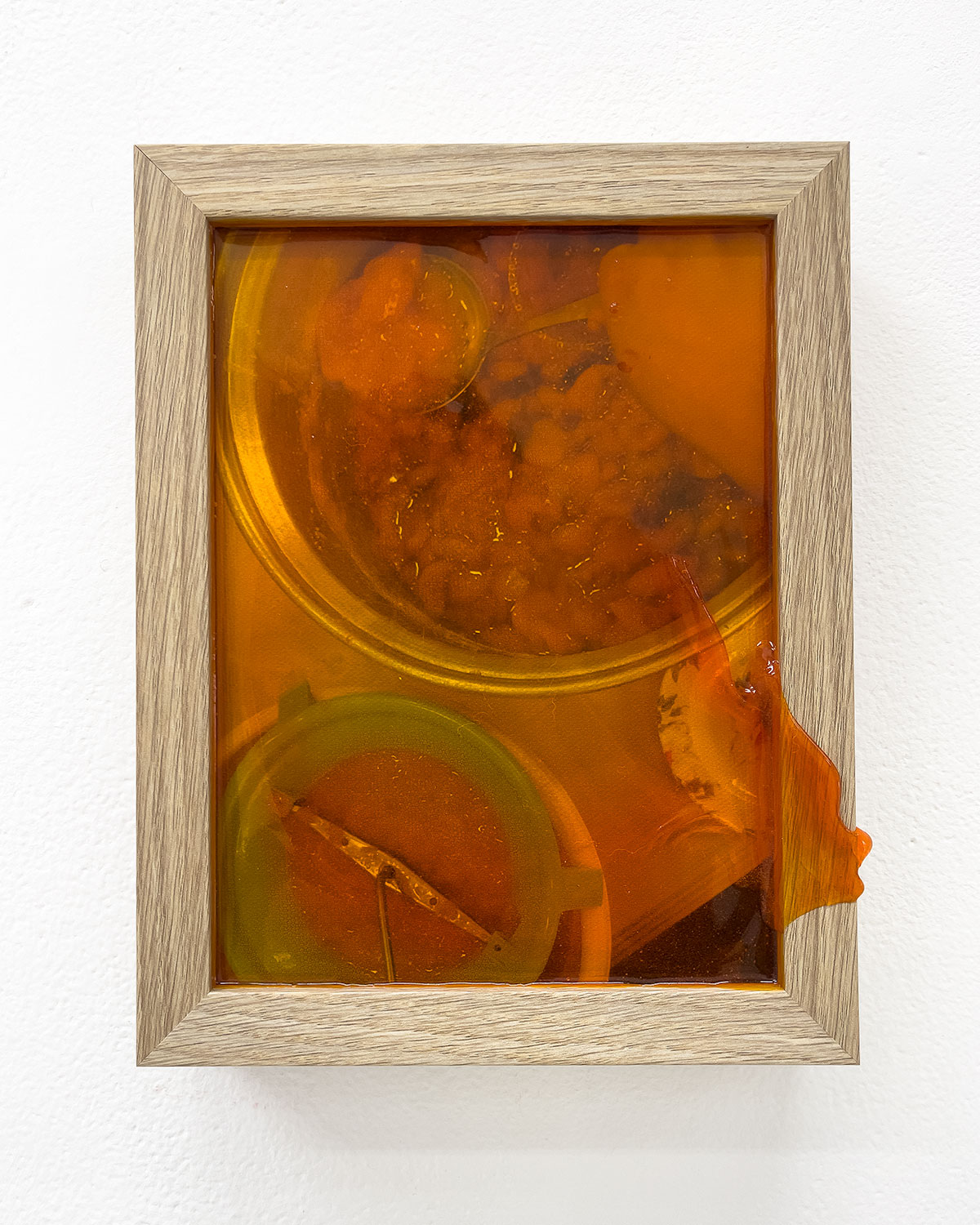
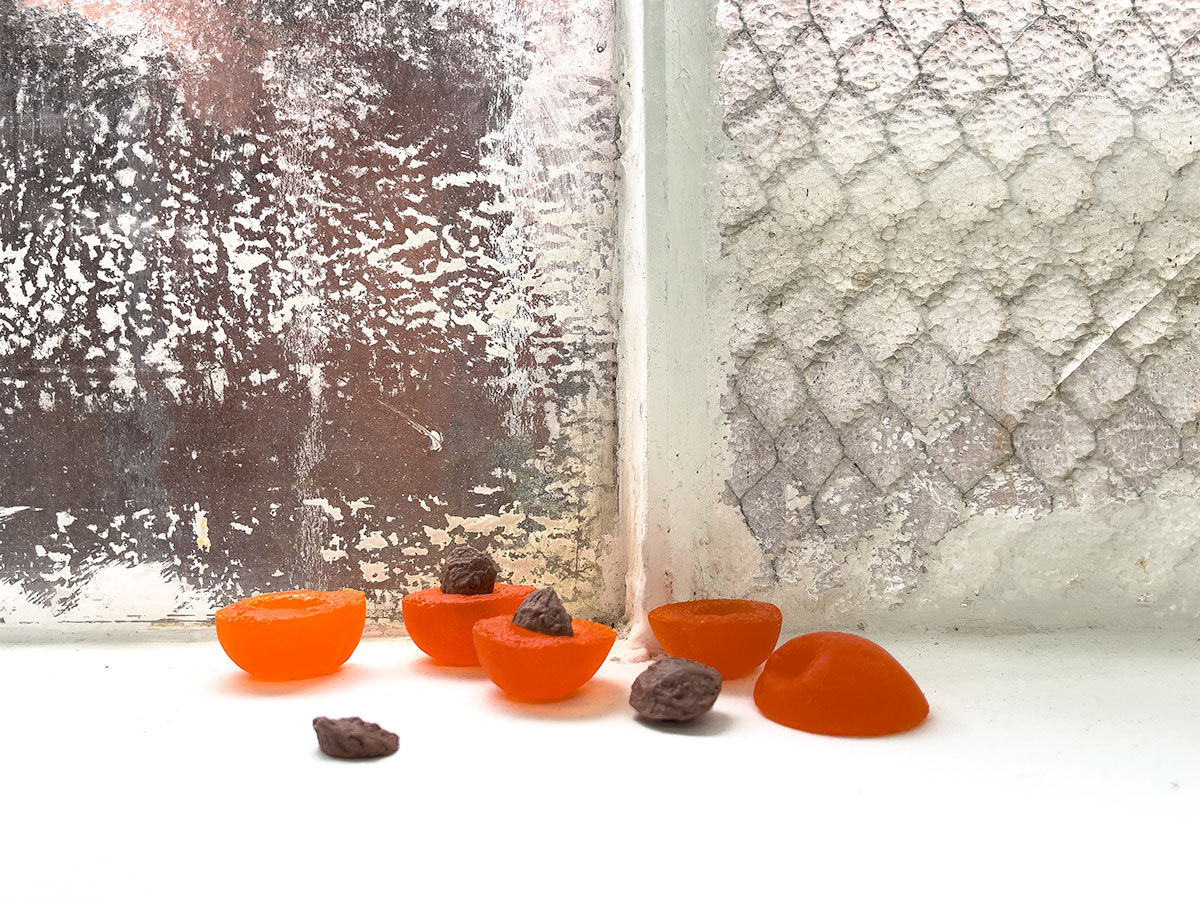
But this art-buffer is the world. Wynne-Jones has found works that while partially magical, are sort of casual — like the sinks and chair noises in Evangeline Riddiford-Graham’s sound piece Potluck. never together lets art sink into the space, not hover above it, not be too special (but still special!). As with Christopher Duncan’s handwoven tablecloth work, Three temples, that casually adorns the table at the gallery’s entrance. Simple stories. Riddiford-Graham’s narrative begins with two housemates’ synced up periods, which overdetermine the party’s trajectory, as foul-mouthed Pete’s dog finds his way into their stinking bin bag to chew on the girls’ used pads. It’s a funny story that listeners are likely to experience in fragmented clips of sound, given the gallery context. So the words, delivered by softly spoken Vivienne La, crudely batter you, like Pete calling his dog a ‘dirty little rapist’. More than narrative, these fetish objects, “words”, are the true subject of this exhibition.
never together is about a particular narrative: the Helen Garner story ‘In Paris’ (hence Chamas’ French Connection), originally collected in Postcards From Surfers. The story served as a prompt for the five artists curated into the show. In this clipped story, a man (French) and a woman (Australian) in Paris want different things. They have a mild argument, which turns into a reflection on the meaning of food. Him: ‘Fish and green vegetables are never eaten together […] It is not done’. Her, to his outrage: ‘It’s only food’.
Matilda Davis features fish and greens in her painting Night Walk Morning. A cute fish hovers in the air above a purple pond or black hole, gazing up out of the broccoli forest. A luminous gold chain dances across the pond, toward an unpeopled picnic blanket with basket of eggs, to the left of which a stray egg is cracked wide open. The cracked egg is my favourite, potentially rich with symbolism but more happily legible as a cute egg, there on the grass below the broccoli for no clear reason. That is, I am being anti-narrative. I don’t want the fish’s story, I just want the fish, and the egg (‘It’s only food’).
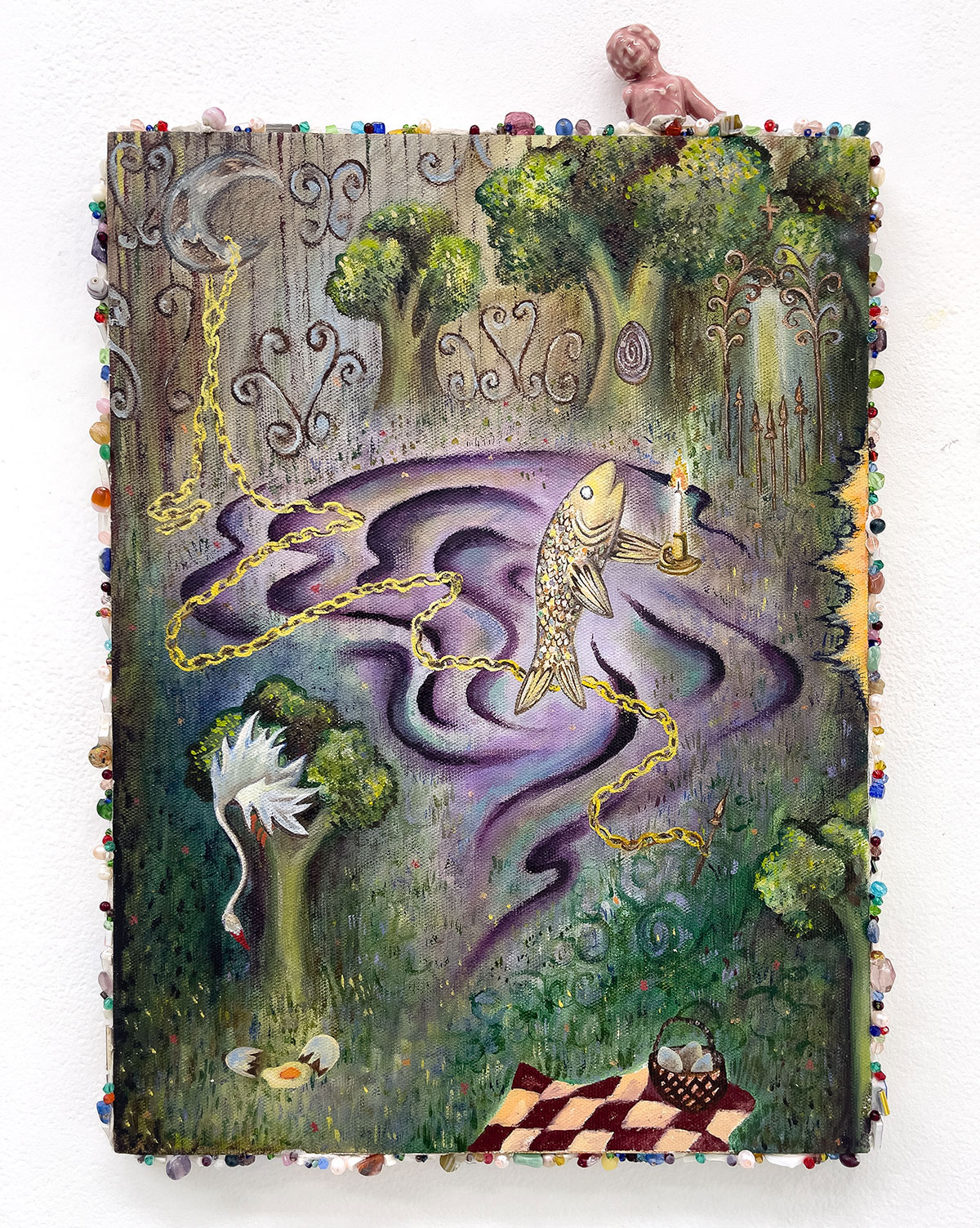
Velvet McDougall. Image courtesy of FUTURES.
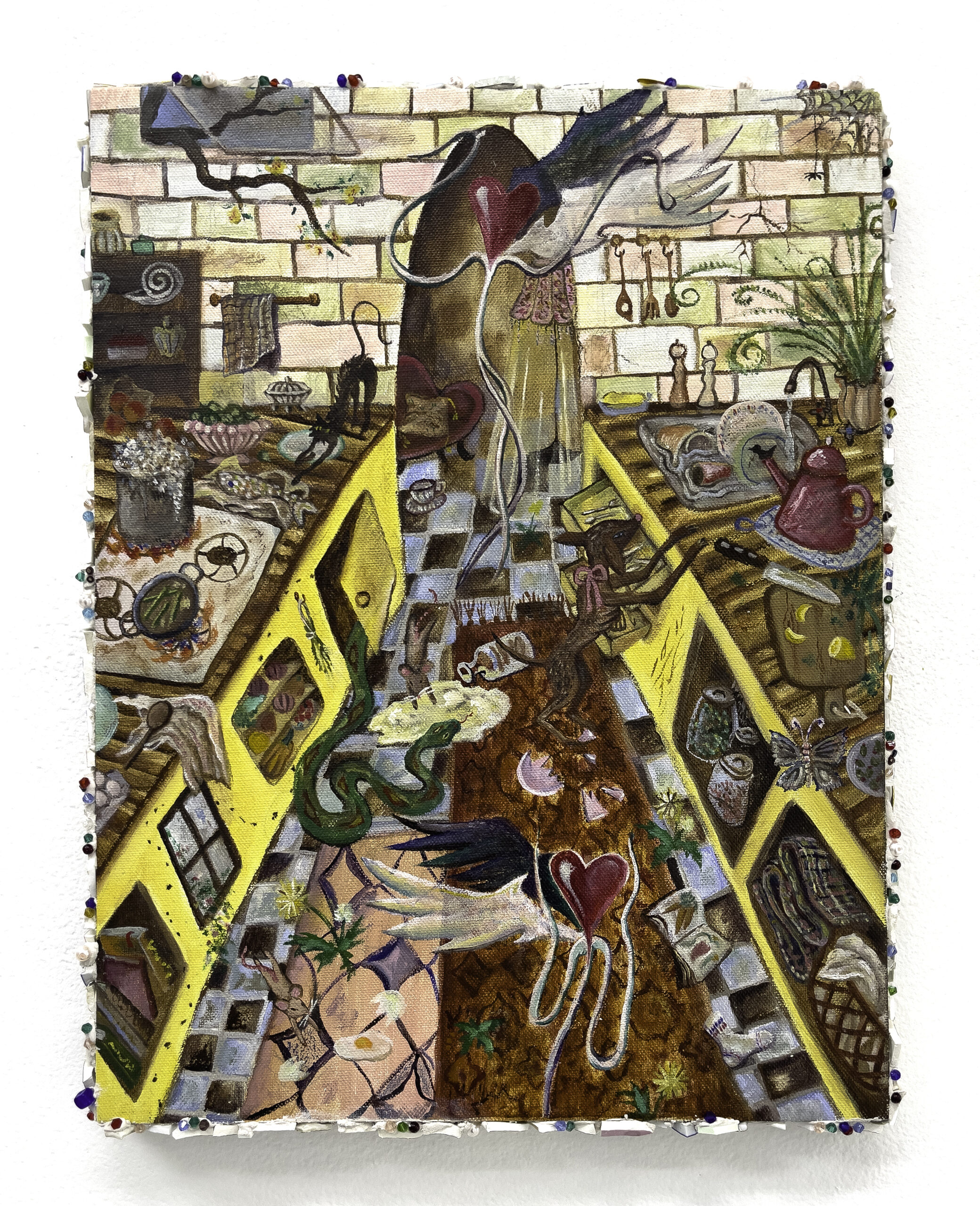
by Velvet McDougall)
The chain dangles from a hard, low crescent moon (or is the moon painted on a suburban wooden fence?). The fish’s candle is orange, like the spatter of light on the far right of the canvas, towards which the fish might be hovering. He (he?) wants to meet his maker. If there is a maker. It could also be the porcelain bust that adorns the rim of the canvas, catching the fish’s eyeline, pink and chipped and also looking up, ecstatic. OK, narrative, but also words: Davis’s paintings are little maps of bits, treasures that simply delight. Like the tiny sock in the work everything is happening and this happens every day, or the whole of kitchen wunderkammer, a four tiered painting of figurines and produce that hint at histories but don’t quite. Or don’t need to “take us there” — the surface (the words), so cosy.
Fiona Williams’ Untitled cyanotype print hangs in the hallway off the main room at FUTURES, responding quietly to Garner’s story through the motif of rain. As it hits horizontal paper causing chemicals to react, rain makes the print’s pattern. In a way this process calls to mind the argument of Garner’s woman about the value of food: ‘It’s to stop us from feeling hungry for a couple of hours so we can get our minds off our stomachs and go about our business. And all the rest is decoration.’ The tension between decoration and functionality feels like an Australian neurosis to me, which Williams brings to light in this simply decorative work that’s also kind of serious, not just a pretty picture of rain but ‘elemental’, allowing ‘nature’ to speak. Not rain as decoration but RAIN for real, taken out of its banal use context to infiltrate ‘our business’ by doing its business, on like a mystical level… The artist as magician? The piece of blue paper sold for $900.
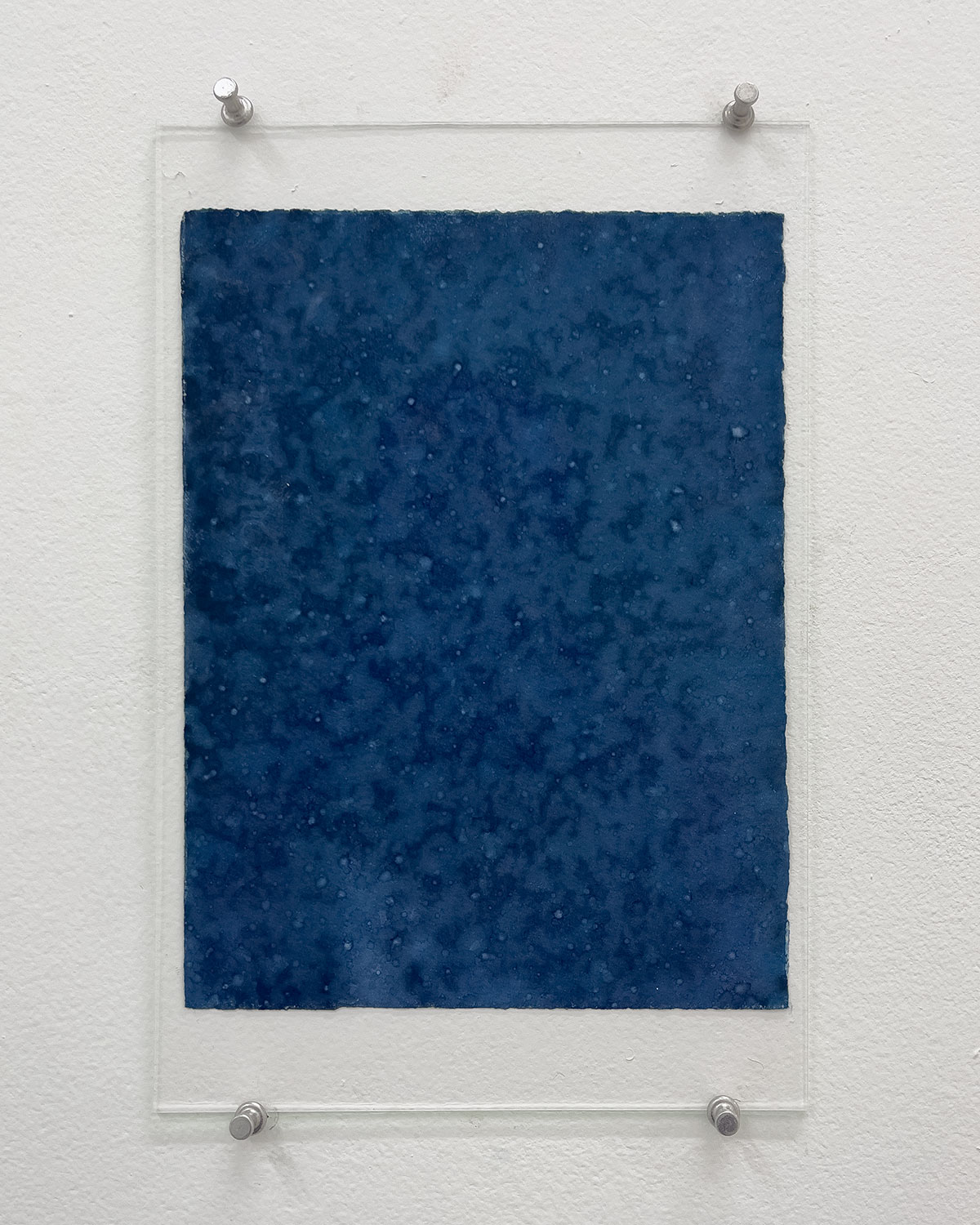
In Paris is a story that employs Ernest Hemingway’s iceberg theory of narratives. It is an interesting guiding star for this show that celebrates excess, exemplified by Davis’s intense paintings and Riddiford-Graham’s ‘glad wrapped ambrosia’ plus potty mouth (‘Claire might use her hand but I just drip’). Is it unbecoming to bring Hemingway into this? His famous theory that the writer may omit narrative elements, so long as they themselves know what happens beyond the frame, offers a mystical idea of reading. That is, the words of a story are not “only words”, but hold a lot of weight.
Gareth Morgan is the author of When A Punk Becomes A Spunk and Dear Eileen, and codirector of Sick Leave.
un Projects’ Editor-in-Residence Program is supported by the City of Yarra, Creative Victoria and City of Melbourne
